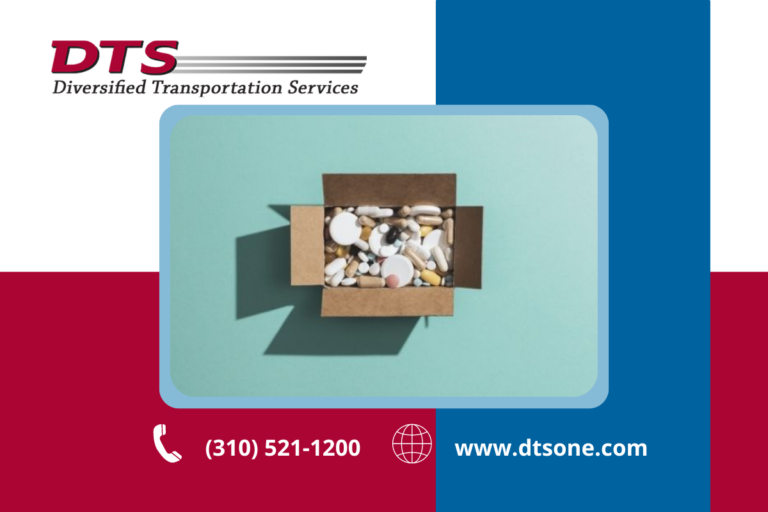
The freight transport industry is one of the most significant cogs in the wheel for product innovation and distribution. This role becomes even more critical when considering the requirements for transporting some of our most temperature-sensitive products. No industry is this more apparent than in pharmaceuticals, where even a minor malfunction can have grave consequences.
Due to the sensitive nature of many of these products, there are many federal, state, and local laws that dictate how you can transport the items. There are also several different federal agencies with oversight, including the FDA, DOT, and DEA. Couple all those acronyms with regulations from the manufacturers, and you can easily see why this field is particularly well-regulated.
Here is more info on the various pharmaceutical shipping regulations and how they can impact the industry:
As far as controlling the lion’s share of pharmaceutical regulations, the Food and Drug Administration (FDA) has the most prominent role. The agency's role is to protect the public’s health by ensuring that the items we consume are safe. Things like prescription drugs and medical devices undergo rigorous screening and testing to ensure they work as the manufacturer claims. These trials are for products marketed to humans as well as those with veterinary uses.
The good thing about the FDA in this role is they put rules and restrictions that are clearly defined, making it easier to remain in compliance. Within the context of pharmaceuticals, this means information on the approved temperature range for shipping, warehousing, and distribution. But there’s more to the FDA than just temperature control, which is just one of the four pillars of regulation for the FDA. The other three that make up this quartet include hygiene, security, and recordkeeping.
Beginning with the most well-known of the FDA requirements, the cold supply chain is crucial to many different industries. If products go outside of their safe temperature range, it can lead to ineffective medications, vaccines, or devices. This is what makes compliance so crucial in the medical community. For most products, storage and transportation are easy so long as the temperature range remains between 55 and 77 degrees Fahrenheit. But once outside of that comfortable range, things start to become more challenging.
Within the cold supply chain, there are four different steps.
When transporting products that require temperatures outside the normal bounds, it usually requires a particular type of vehicle or trailer. These vans and trucks are modified to allow temperature control while traveling. This helps ensure the products stay within the safe temperature range. The modifications to the trailers and vehicles often include improved gaskets and seals. Some even have partitions that allow the transport of products in different temperature zones.
Similar to vehicles, you must ensure the warehouses will remain compliant with the temperature requirements. You want to ensure that the warehouse has a backup generator in the event of a power loss. This will make sure that temperature-sensitive products aren’t lost or damaged.
Another critical aspect of FDA regulation is the requirements for who can be around the products while in transit. There are rules about who can and is allowed in proximity to the pharmaceuticals. There are also requirements for other security procedures, including surveillance cameras, access control measures, and automatic locking doors.
Like in restaurants, the FDA is responsible for overseeing the storage conditions of products. Anywhere that the pharmaceuticals are stored must provide adequate cleaning, proper ventilation, and safe storage practices to ensure nothing happens to the products. This crackdown also includes the personal hygiene of those handling and administering the medication or equipment.
The titanic effort required for accurate recordkeeping is a requirement for anybody following the FDA-approved pharmaceutical shipping regulations. This work is crucial for products to arrive protected. Being able to provide this documentation also ensures the responsible party pays the cost of any non-compliance problems, including any fines or replacements.
Several scenarios include the Department of Transportation (DOT) involving themselves in the transport of pharmaceutical products. Most of the time, this revolves around the transportation of hazardous materials. Be sure the planned delivery route complies with all requirements for the transport of whatever item has the “hazmat” label.
Another government agency with an eye toward pharmaceutical transportation is the DEA (Drug Enforcement Agency). This group gets involved because many different medications double as controlled substances, thanks to the risk of generating addiction. These medications can be anything from painkilling opiates to medicines that address ADHD. Whatever the individual medical product is, the DEA will be involved if there is the possibility of theft.
One method for simplifying the process is using technology to protect the products during shipping and delivery. Packaging advancements protect the products from damage during transit. RFID-enabled pallets are easier to track than wooden pallets and save the shipping companies time during recordkeeping. This packaging is especially important for products that require extreme temperatures, sometimes necessitating storage of thermal, cryogenic containers at -150 degrees Celsius. Be sure the shipping company you select can accommodate any requirements your pharmaceutical products may require.
With so much in the way of laws and regulations, it’s easy to understand why pharmaceutical transport is so discombobulating for many industry newcomers. That’s where the professional team at Diversified Transportation Services comes in to help. With a hard-earned track record of success in all facets of freight management, we are the one-stop solution for all your shipping needs.
Whether you're a company looking to improve one facet of your supply chain, your entire supply chain, or simply looking for a transportation and logistics consultation, we can help.